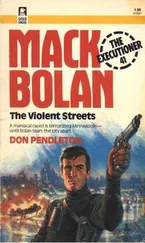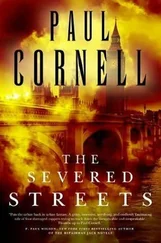But the morning’s testimony is merely prelude to the real battle-a war of credibility that begins later in the day when a seventeen-year-old schoolgirl, obviously terrified, walks past Robert Frazier and takes the stand.
Romaine Jackson is literally shaking as she takes the oath; the jurors can see that. She sits demurely, hands in her lap, face locked on Doan, eyes unwilling to acknowledge the tall, dark man at the defendant’s table. In Doan’s worst nightmare, he sees this witness-this essential witness-collapsing from fear. He sees her unable to answer, unable to tell the truth about what she saw from her window on Gilmor Street that night, unable to recall the things that they had talked about in the pretrial interviews. All of which would be understandable, even forgivable: The state of Maryland will not allow her to cast a vote or buy a beer, but the state’s attorney will nonetheless ask her to identify a murder suspect in open court.
“My name is Romaine Jackson,” she says softly, responding to the clerk’s questions. “I live at Sixteen-o-six West Pratt Street.”
“Miss Jackson,” says Doan soothingly, “try to keep your voice up so the ladies and gentlemen of the jury can hear you.”
“Yes, sir.”
As slowly, as calmly as possible, Doan takes her through the foundation questions and back to that night on Gilmor Street, back to the moment when she happened to be looking out of that third-floor window before falling off to sleep. The girl’s answers are close to monosyllabic; the court clerk reminds her once again to speak into the microphone.
“At some point, did you have an occasion to see your neighbor Charlene Lucas outside of your apartment?” asks Doan.
“Yes.”
“Would you tell the ladies and gentlemen of the jury approximately what time it was when you saw her?”
“Eleven o’clock going onto twelve.”
“Was she by herself or with someone else?”
“Yes,” says the girl. “A man.”
“Do you see that individual in court today?”
“Yes, sir,” says the girl.
“Would you point that individual out?”
Romaine Jackson’s eyes break from the prosecutor for half a second, just long enough to follow her right hand in the direction of Robert Frazier.
“Him,” she says quietly, her eyes once again riveted on Doan.
The prosecutor moves forward slowly. “Would you describe what the defendant looked like on that evening?”
“Tall, dark and slim,” she says.
“What was he wearing that evening?”
“A black coat. A black jacket like this one.”
“Was he wearing anything on his head?”
“A hat.”
“What color was it?”
“A white hat,” she says, a hand to her forehead, “with a snap on it.”
She is crying now, just enough for it to show, not enough for Doan to think of stopping. Following the prosecutor’s lead, she tells the court about how Lena and the tall man walked toward Lena’s rowhouse next door and then disappeared from her view, how she fell asleep to the sound of an argument coming from a lower floor of the adjacent house, how she later heard about the murder.
“Miss Jackson,” asks Doan, “after you discovered or learned that Charlene Lucas had been murdered, did you go to the police with the information you had?”
“No,” she says, crying again.
“Why was that, ma’am?”
Polansky objects.
“Overruled,” says Gordy.
“Scared,” the girl says. “I didn’t want to get involved.”
“Are you still scared?”
“Yes,” she says, her voice little more than a whisper.
Frightened but firm, Romaine Jackson holds to her testimony throughout Polansky’s cross. The defense attorney works the edges of her story: the lighting on the street that night; the time that she was looking out the window; her reasons for looking out the window; her ability to hear the argument in the house next door. Polansky can’t run roughshod over this young girl; even if harsh tactics could rattle her story, the jury would resent such treatment. Instead, he can only suggest that she is mistaken, that perhaps she cannot be sure she saw Robert Frazier when she says she saw him. Polansky works the corners of the girl’s testimony for half an hour, prolonging her agony but doing little to change the essentials of her story. By the time she leaves the stand in the late afternoon, Romaine Jackson’s quiet embrace of the truth is a powerful force.
“Whoa… Romaine, honey,” says Garvey, catching her as she races out the rear doors of the courtroom. “Hey, now, tell the truth. That wasn’t all that bad now, was it?”
“Yes,” she says, now crying and laughing in the same breath. “It was.”
“Oh, come on,” says the detective, wrapping an arm around her. “I’ll bet you got to like it a little at the end, didn’t you?”
“No,” she says, laughing. “No, I did not.”
Half an hour later, when Doan emerges from the courtroom, Garvey buttonholes him in the third-floor corridor: “How’d my girl do in there?”
“She was great,” says Doan without exaggeration. “Scared, but great.”
But it is far from over. The next day’s testimony brings the end of the state’s case, with both attorneys skirmishing over the ballistic evidence and the.38 ammunition recovered in the case. With Dave Brown on the witness stand, Doan tries to limit the testimony to the.38 bullets recovered from Frazier’s car after his arrest; Polansky, laboring hard not to violate the pretrial motions prohibiting any mention of the Purnell Booker slaying, probes Brown on cross about the issue of the earlier search warrant, when the detectives recovered the.38 wadcutter ammo and knives from beneath Vincent Booker’s bed. It is a sensitive issue-neither attorney wants to cross the line that brings the Booker murder into testimony-and it requires four bench conferences with Gordy before Brown’s testimony is successfully negotiated. On redirect, Doan makes sure to have Brown testify that the knives recovered from Vincent Booker were tested and found to be free of blood, but still Polansky has managed once again, with a few questions, to raise the specter of an alternate suspect.
He does so yet again when Joe Kopera, from the firearms unit, follows Brown to the stand. Doan leads Kopera through the examination of bullets used to kill the victim, as well as the.38 cartridges found in Frazier’s car after his arrest. The bullets are all of the same caliber, Kopera agrees. But that testimony, although limited, opens the door to Polansky, who follows up by noting that the bullets that killed Lena Lucas are.38 wadcutters, and the bullets recovered from his client’s car are.38 round-noses.
“So what you are saying,” says Polansky, “is that while the bullets that came from Robert Frazier’s car are indeed thirty-eights, they weren’t the same kind of thirty-eights that were recovered from the crime scene.”
“Yes, sir, that is correct.”
“And some of the bullets-twelve of the bullets recovered from Vincent Booker’s residence-were not only thirty-eight caliber but were also wadcutter. Is that correct?”
“Yes,” says Kopera.
If Rich Garvey could hear this, if he could hear Polansky propping up the shadowy figure of Vincent Booker in front of the jury, he might be inclined to wring Doan’s neck. The only way to counter Polansky is to make the link between the bullets taken from Vincent Booker and Robert Frazier, and the only way to do that is to put Vincent Booker on the stand. Booker himself could testify that he gave the wadcutters to Frazier on the night of the murder; that Frazier had told him they were going to get the drugs back from his father and had asked him for ammunition. But that kind of testimony might raise more questions than it would answer; in Doan’s mind, the only reasoned alternative is to cut bait.
Читать дальше












